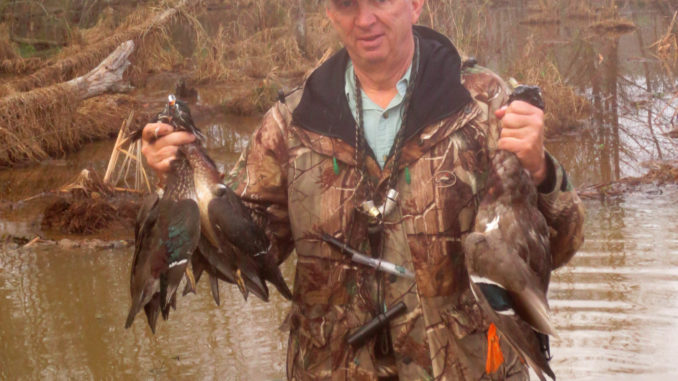
Public waters and WMAs will hold enough ducks to make Thanksgiving, Christmas hunts memorable
The confluence of South Carolina’s weather pattern with our duck season makes Thanksgiving week and the entire Christmas season idea for bird-shooting in coastal marshes, inland lakes, puddles and streams. By Thanksgiving, cold weather almost invariably freezes ponds and lakes in the northern portion of the Atlantic Flyway, forcing migrations of smaller ducks like teal and woodies toward us. By Christmas, with many duck seasons in New England already closing and everything inland solidly encased in ice, the remaining big ducks like mallards and blacks have only the option of coastal wetlands or flying south. Like human snowbirds, lots of them head for the Carolinas. It’s show time.
South Carolina waterfowlers hunt in several different worlds. Our state is loaded with big water, both salt and fresh, private plantations and ponds, habitat managed by the S.C. Department of Natural Resources, plus lots of little water puddles and flows often hidden from view.
In the big-water world, the inland lakes and reservoirs — and especially in our expansive coastal marshes the playing field is divided between where the do-it-yourselfers can hunt and the private plantations. Freelancers hunting in big water need boats and decoys, the tide makes some areas tricky, and crowds are often present. And occasionally, a few sky-busting shooters, anxious to at least make some noise, scare the birds away. Success here is mostly determined by the hunter’s experience and skill. Good hunters do kill ducks, but limits are unusual. The owners of plantations and private ponds go to great lengths to legally attract and hold wild ducks, and they occasionally release mallards, making for successful results on their private waters fairly predictable.
State Wildlife Management Areas results are also diverse. On draw hunts, where access is limited and the land and water levels are managed by SCDNR for exceptional habitat, hunters have predictably excellent hunts. On the other hand, the so-called Category II wetlands allow access to anyone and are normally open on Wednesdays and Saturdays. Check the SCDNR website (www.dnr.sc.gov) for open lands and times. These areas see plenty of hunters who have varying degrees of success. Dean Harrigal, waterfowl program coordinator for SCDNR, said, “There are some very good Category II areas, and they get a lot of pressure, but hunters keep coming back. Hickory Top Greentree Reservoir in Clarendon County, for instance, is about 400 acres of great wood duck habitat where hunters kill lots of ducks every year, 98 percent of them woodies. Most people would be surprised that band studies show that a very large percentage of our wood ducks harvested are migratory birds from New England and Maine.”
Though not overwhelmed with ducks, opportunities abound on other public lands and larger WMAs such as Sumter National Forest, Francis Marion National Forest and the Webb Wildlife Center by focusing on riverbottoms and flooded flats.
“Lots of modern-day hunters scout big public tracts with Google Earth to find small flowages, beaver ponds, oxbow lakes off rivers and other duck-holding areas,” Harrigal said.
If you find a good patch of undisturbed water, there is a good chance it will hold a few ducks.
Ducks are also taken by hunters who float and paddle rivers and jump birds, while some even stalk creeks on food with their trusty dogs. Harrigal said a friend of his regularly hunts an undisclosed, small stream for limits of woodies.
Jay Lovell, Brian Harrelson and other members of the Beaufort chapter of Ducks Unlimited are among do-it-yourselfers who regularly play the legally accessible portions of the ACE Basin and make the most of what is there.
Lovell and friends normally hunt freshwater areas in the tidal zone, upstream from the brackish water, using the higher portions of the tide to gain access to old rice-growing areas. With water depths ranging from mud to almost 10 feet at different times, the stages of the tide area mostly a limiting factor. When the water is too low, hunters can’t get their boats into the abandoned rice plantations and flooded marsh.
Even with major proportions off-limits because they’re either private or protected as national wildlife preserves, there remains plenty of huntable wetlands. When motoring through at higher tide stages, one marvels at the number of places to hid on edges of tidal ponds that look very ducky. As good as these spots look, there are not many ducks there because of a lack of natural food. Most birds are attracted to the plantations and WMAs where grain is planted or natural food sources are actively managed.
Boat blinds, if not a necessity, are certainly a huge advantage when the high marsh grasses get beaten down as the season progresses. Lovell has a 13-foot Boston Whaler covered with an adapted boat-blind frame and woven marsh gras, and he adds some spray-paint splotches for contrast. He always stays in the boat because of the pluff mud and alligators and never takes his dog early in the season. Retrievers and alligators don’t mix in the coastal freshwater.
When setting up in abandoned rice fields, Lovell uses a sizable spread of decoys, including bluebills, some redheads, a few mallards, some black ducks, lots of teal and a few pintails mainly as confidence decoys. He uses whirling wing and other motion decoys, but he pays attention to when ducks become familiar with them and start to shy away later in the season.
For the public-water hunter, most really successful hunts accidentally coincide with hunts on adjacent managed lands when the shooting pressure keeps birds flying. At other times, shooting a few ducks is considered a pretty good outing.
The bag in November and December includes greenwing teal, gadwall, widgeon, mottled ducks, pintails and some mallards — the latter if the plantation is shooting. They try not to but still occasionally bags “hairy heads” aka hooded mergansers, that are not good to eat. There are plenty of buffleheads in the saltwater areas along the coast, but few hunters target them.
When shooting on rivers, where most chances will be passing shots and the water is deeper with stronger currents, Lovell uses longer lines and fewer decoys, with wood ducks included in the spread.
“Overall, South Carolina has very good duck hunting,” Harrigal said. “Most hunters kill ducks but don’t talk about it much.
Actually, conditions have been wet this year, and that is good for acorns and some natural vegetation, so indications are good.”
DESTINATION INFORMATION
WHEN TO GO — The last two segments of South Carolina’s split duck season run from Nov. 22-29 and Dec. 6-Jan. 25. Legal shooting hours are 30 minutes before sunrise until sunset, with a daily bag limit of six. For species restrictions, see www.dnr.sc.gov/regs/migratorybird/regulations.html.
WHERE TO GO — The ACE Basin can best be accessed from SC 174 and US 21 from US 17 and I-95. Hunters planning to hunt there need to make scouting trips before actual hunting trips. Finding a hunting spot in the dark is difficult without a plan. Use a chart of the area, select a boat ramp near to where you plan to hunt and do some daylight scouting.
GUIDES/HUNTING INFO — See Guides and Charters in Classifieds.
ACCOMMODATIONS — Beaufort Area Chamber of Commerce, 843-986-5400, www.visitbeaufortsc.org.
MAPS — Capt. Segull’s Nautical Charts, 888-473-3855, www.captainsegullcharts.com; Top Spot map N233, is available from most area tackle shops.

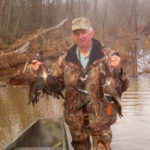
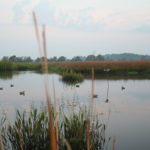
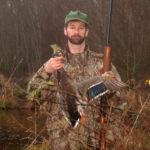
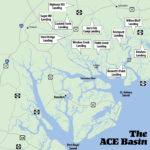



Be the first to comment